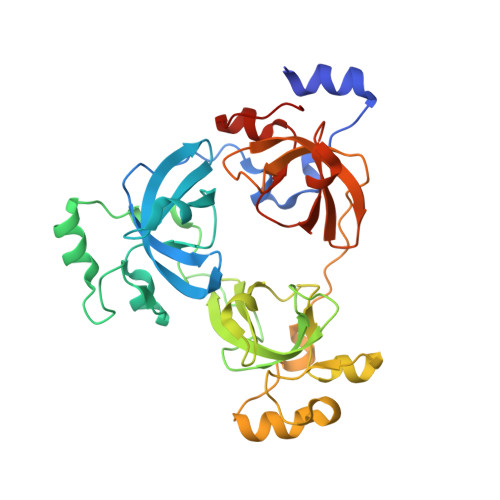Small-molecule ligands of methyl-lysine binding proteins.
Herold, J.M., Wigle, T.J., Norris, J.L., Lam, R., Korboukh, V.K., Gao, C., Ingerman, L.A., Kireev, D.B., Senisterra, G., Vedadi, M., Tripathy, A., Brown, P.J., Arrowsmith, C.H., Jin, J., Janzen, W.P., Frye, S.V.(2011) J Med Chem 54: 2504-2511
- PubMed: 21417280
- DOI: https://doi.org/10.1021/jm200045v
- Primary Citation of Related Structures:
3P8H - PubMed Abstract:
Proteins which bind methylated lysines ("readers" of the histone code) are important components in the epigenetic regulation of gene expression and can also modulate other proteins that contain methyl-lysine such as p53 and Rb. Recognition of methyl-lysine marks by MBT domains leads to compaction of chromatin and a repressed transcriptional state. Antagonists of MBT domains would serve as probes to interrogate the functional role of these proteins and initiate the chemical biology of methyl-lysine readers as a target class. Small-molecule MBT antagonists were designed based on the structure of histone peptide-MBT complexes and their interaction with MBT domains determined using a chemiluminescent assay and ITC. The ligands discovered antagonize native histone peptide binding, exhibiting 5-fold stronger binding affinity to L3MBTL1 than its preferred histone peptide. The first cocrystal structure of a small molecule bound to L3MBTL1 was determined and provides new insights into binding requirements for further ligand design.
- Center for Integrated Chemical Biology and Drug Discovery, UNC Eshelman School of Pharmacy, Division of Medicinal Chemistry and Natural Products, University of North Carolina at Chapel Hill, Chapel Hill, North Carolina 27599, United States.
Organizational Affiliation:



















